Many documentary projects and images that photographers capture are controversial pictures. Either the subject is hard to look at, or the story it tells does not fit our ideas of society.
Join us in our 20 most controversial images in the history of photography. Viewer discretion is advised.

20 Most Controversial Photos in the History of Photography
These are our picks for the most controversial photos in photography history. Let us know in the comments if you think we missed one.
20. Birmingham, Alabama (1963) — Charles Moore
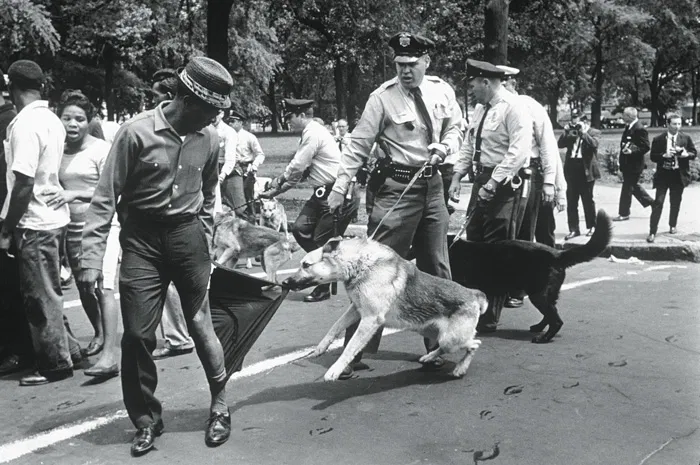
Controversial pictures have helped to change our society. One of these issues was the Civil Rights movement between 1954 and 1968 throughout America.
One of these high-conflict areas was Birmingham, Alabama. Here, black residents and allies constantly clashed with white power in a struggle to end segregation.
Charles Moore, a Montgomery Advertiser and Life photographer, found himself part of these conflicts.
Although he captured many photos focusing on this movement, the photo below captured segregation as a reality. The violence was brutal, routine, and casual.
The photograph, published in Life magazine, allowed the rest of the world to see what was happening. The Civil Rights Act passed a year later, finally abolishing segregation.
19. Behind Closed Doors (1982) — Donna Ferrato
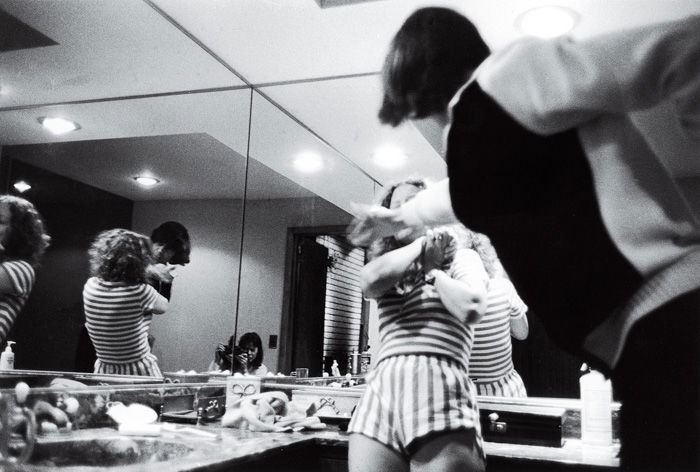
Documentary photographers pursue being part of their subjects’ families. This allows for a realistic and true perspective of their subjects. Donna wanted the same for her Wealthy Swingers project.
She met Elizabeth and Bengt at a swinger party and soon became part of their circle of friends. Because of this relationship, Donna would spend days photographing the parties they held at their house.
Their lifestyle touched on alcohol, cocaine—and what Donna later found—domestic violence. One night, Elizabeth hid their cocaine, and Bengt became furious.
Donna was in the house and saw them arguing in the bathroom. She entered and saw Bengt’s arm raised in an act to hit Elizabeth. Donna captured a photo thinking he would stop. But he did not.
From then on, her project took her to women’s shelters. And she shadowed police to continue capturing incidents and victims. Because of her work, domestic violence came out of the shadows.
Policymakers were forced to confront the issue. They passed the Violence Against Women Act. Penalties against offenders increased, and police were trained to treat it as a serious crime.
Her photographs were the first published photos to show domestic violence.
18. The Face of AIDS (1990) — Therese Frare
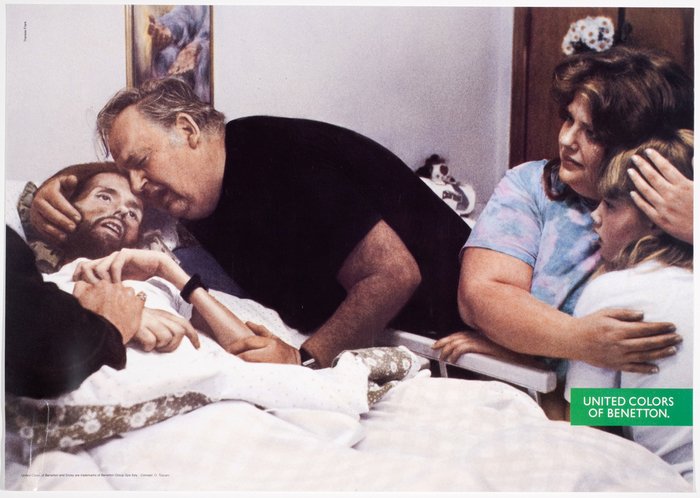
Therese Frare took this picture in 1990. The original photograph was in black and white because Frare did not want colors to disturb the meaning of the photo’s message.
The photographer was a student at the time. It is not often that a professional photographer, let alone a student, can see such an intimate situation.
You feel the strength and love of the family in this photograph. The father is holding his son’s head. And the mother is comforting the dying man’s sister.
The protagonist, David Kirby, was an AIDS activist in the 80s. Here, he lies on his deathbed. This was at a time when homosexuality was illegal.
Kirby died shortly after the captured photo. Two years later, AIDS was still very much a taboo topic. It was the number one killer of US men aged between 25 and 44.
This was when the photo was part of a hard-hitting clothing advertising campaign. United Colors of Benetton hosted the famous photograph.
The creative director, Oliviero Toscani, chose the photo and said he wanted to deal with ‘meaning and issues that advertisers do not normally want to deal with. The image was colorized to add more realism.
It created an uproar. The public asked how such an image could be advertising for a clothing brand. Toscani used the photo because of the impact it had. Controversial pictures took the reigns again.
Rather than promoting United Colors of Benetton, he used the company’s brand and reputation. It was a great platform for showing photos designed to address societal problems.
17. First Woman to Officially Run the Boston Marathon (1967) — Boston Herald

Kathrine Switzer was 20 years old when she decided to run the Boston Marathon. Roberta Gibb had gatecrashed and finished the race the Previous April. In 1967, Kathrine had a number.
At the time, it was an all-male race. Women were not allowed to run, and organizers always ridiculed them. No one believed fragile women could finish it.
To cut suspicion, Kathrine signed the necessary paperwork with her initials. She set off alongside her boyfriend, hammer-thrower Tom Miller.
Camera crews and photographers from a press bus spotted and photographed her a lot. As this was happening, an official spotted her running.
Jock Semple, the race manager, ran after her in leather shoes and tried to rip off her number. “Get the hell out of my race and give me those numbers,” he spewed.
Before he could pull her out of the race, athletic Tom blocked him. But the idea of women running in the marathon was still one of the most controversial topics.
Kathrine finished the race, knowing that it would look like a publicity stunt if she stopped. Five years later, women were given the right to run in the marathon.
16. Cotton Mill Girl (1908) — Lewis Hine
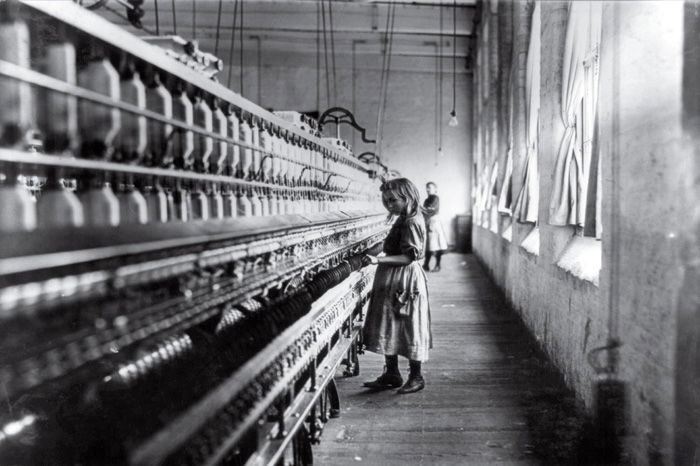
Child labor is an issue we have not sold yet. At the beginning of the 20th century, making children work in various industries was still very common.
Until 1908, Lewis Hine was teaching sociology. After photographing and writing numerous studies about life and work at the turn of the century, he became the National Child Labor Committee photographer.
His work involved photojournalism and investigations as well. In 1908, he set out with a large-format camera, visiting mills and factories.
As photographing was forbidden in most places he went to, he had to sneak his camera in. That is not an easy thing to do with large-format.
Sometimes he would be a missionary selling bibles. He also introduced himself as an industrial photographer who was only there to document the heavy machinery equipment.
His photographs were not surprising to the general public. But their raw nature was shocking. These photographs became a vital tool in the war against child labor and unbearable work circumstances. The image below shows Sadie Pfeifer, a little girl working next to a cotton-spinning machine in Lancaster.
His efforts were successful, although in the long run. In 1912, a federal institution, the Children’s Bureau, was created to investigate and report on all matters about the welfare of children. In 1938 the Fair Labor Standards Act settled the issue in the US.
15. Iraqi Girl at Checkpoint (2005) — Chris Hondros
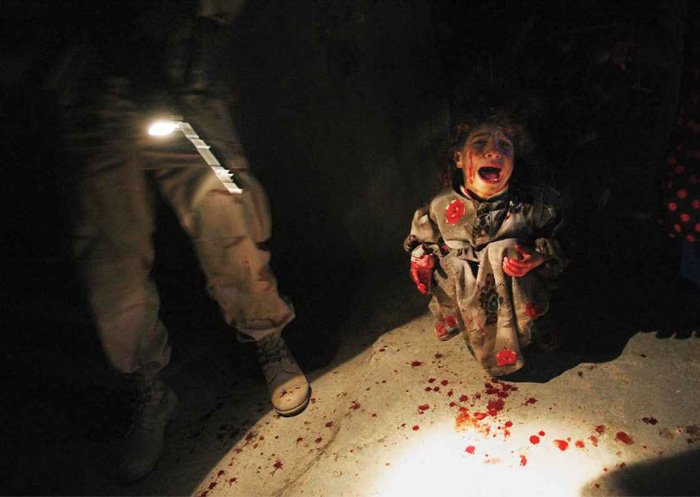
This hard-hitting image of Samar Hassan took place in 2005 at the height of the Iraq war. Moments before this image’s capture, her parents were killed at an American checkpoint.
The family was on the way home from Tal’ Afar, Iraq. American soldiers thought Iraqui rebels were hidden in the car, so they began shooting.
These situations were quite common but never documented on the spot. Chris Hondros was stationed with the military at the time. He turned his camera towards the children during the shooting. He transmitted the images immediately. It was published everywhere across the globe the following day.
Because of this image, the US military revised its checkpoint procedures. They also came under fire because why were they killing the very people they were there to liberate?
This quickly became one of the most controversial pictures in the media. You can almost hear the girl’s scream.
14. Si Quiero (2013) — Gonzalo Orquín
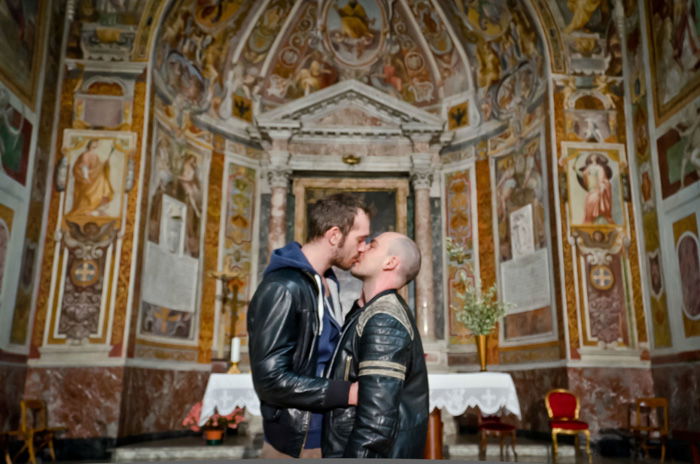
The world around us changes because people challenge the current status quo. Without the challenge, there is no change.
Photographers are no different, as you can no doubt see. Photography has the potential to encompass many other disciplines.
Gonzalo Orquin’s photography encompasses love, romantic nature, sociology, and current affairs. His 2013 photo series shows gay and lesbian couples kissing in Roman Catholic churches in Rome.
These photographs were planned for an exhibition titled “Trialogo,” which was scheduled to open at the Galleria L’Opera in Rome. But it was not meant to be. Vatican City officials sent a letter threatening legal action if the photos get exhibited.
Spokesman Claudio Tanturri even told a newspaper that the photos violate the Constitution of Italy.
Orquín spoke to lawyers and decided not to exhibit the photos “for security reasons.” Even though the couples showed strength, unity, love, and public worship, the Catholic religion was not yet ready.
Gonzalo managed to capture one of the most controversial pictures in the history of photography.
13. Immersions (Piss Christ) 1987 — Andres Serrano
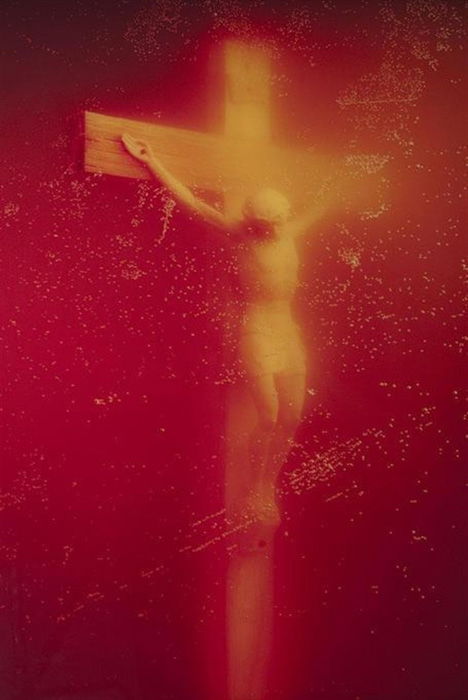
By the looks of it, Andres Serrano knows how to create controversy from icons and religious pieces. Here, Serrano created the image of a crucifix immersed in his urine.
The photo was first exhibited in New York in 1987 as part of the ‘Immersions’ series. The series depicts different objects submerged in fluid. In 1989, the exhibition highlighted a scandal because of its funding from a state-funded institution.
The artwork and the artist were accused of being blasphemous. A pastor made it his mission to stir up a fuss, and in no time at all, Congress was also involved. Due to this piece and the outspoken nature of the pastor, senators passed a new law.
The new law stated that the National Endowment for the Arts (NEA) was obligated to take “general standards of decency” into account before granting an award.
This piece and the work from another NEA fellow named Robert Mapplethorpe divided the nation over one question. ‘Does the US Government have the right to put art under censorship?’
These two artists opened the doors for others to push limits. Thankfully, in 1998, the Supreme Court overturned the new law.
Due to these controversial photographers, fine art photos can be created and interpreted free of laws and rules.
12. In the Shadows of Kolkata (1978) — Mary Ellen Mark and Souvid Datta (2017)

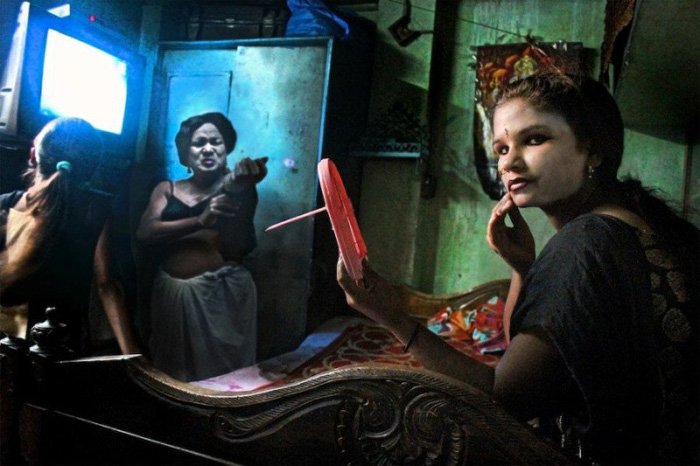
Over recent years, documentary photography award finalists have come under increasing pressure. Many have fallen under the accusations of fakery and photo manipulation.
David Byrne had his stripped due to excessive editing. Giovanni Troilo had his revoked due to manipulating captions. Or read about the stuffed anteater.
Documentary projects submitted for awards need to follow strict rules carefully. Manipulating an image changes the very idea of what documentaries are all about.
Here, we are looking at Souvid Datta and Mary Ellen Mark. Datta is an award-winning photographer who used his image to promote a photography contest.
The image is titled In the Shadows of Kolkata. It was part of a series about sexual violence in Kolkata.
Souvid claimed that the woman in the background was a veteran sex worker named Asma. The controversy arrived when Shreya Bhat realized something.
The woman looked similar to another woman in an image from documentary photographer Mary Ellen Mark. Then, they realized it was the same woman! It was copied and pasted into Souvid’s image.
Mary Ellen Mark’s image, captured in Bombay, took place 40 years ago in 1978. Due to Souvid Datta, he lost many of his awards and reputation.
On top of this, Souvid was also accused of using images from other photographers under his name. These controversial pictures in the media created a backlash, where most documentary images are reviewed aggressively.
11. Falling Man (2001) — Richard Drew
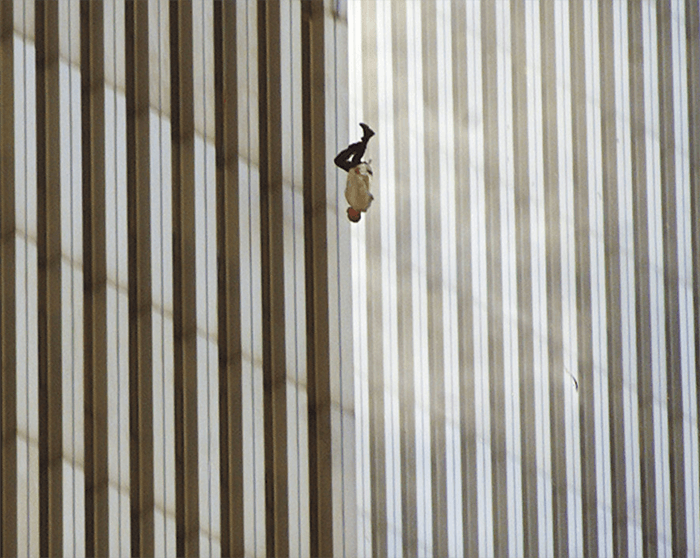
We know the story of this image before we even see the title. We have seen those perspectives on death.
But most of the photographs of the 9/11 attack show airplanes and towers. There are not many photographs of people.
Falling Man is a photo showing someone dying on 9/11. A wide audience has seen it. Newspapers published the photo, but the readers’ reaction made the photo disappear for a while.
It is one of the most controversial pictures in history for many reasons. It shows someone about to die and reminds us of the tragedy of the 9/11 mass attack in New York.
It is a quiet photograph; there is no blood and guts. But we all know this person is falling toward his death. People can relate to this photograph because this man had no hope. He had no choice but to jump from the burning building to his death.
The photo is even more tragic because the Falling Man’s identity is unknown. He may have been an employee of the Windows on the World restaurant at the top of the tower.
He is like an Unknown Soldier who died in a war. He is like many other unidentified and innocent people in the history of humanity.
10. Bosnia (1992) — Ron Haviv
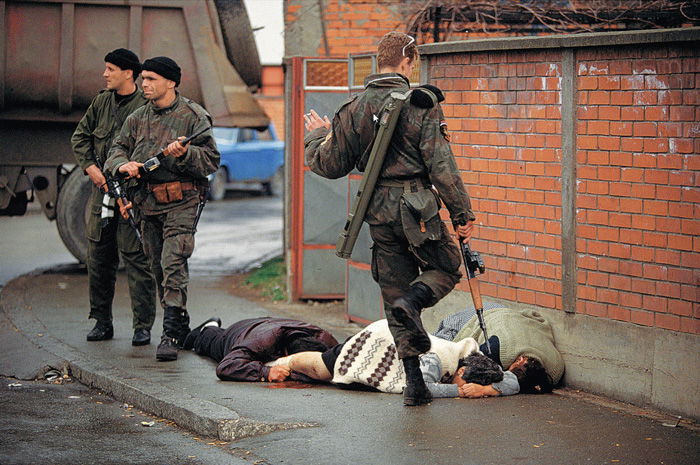
Ron Haviv is a photojournalist most famous for his images of the Yugoslav Civil Wars between 1991 and 1995.
He risked everything to capture this image. It happened during the war in Bosnia following the breakup of Yugoslavia.
He followed Arkan’s Tigers, a Serbian nationalist volunteer paramilitary unit. They agreed to be photographed, but only for good publicity. He was prohibited from photographing murders, but the brutal scenes of ethnic cleansing were happening in front of his eyes.
He went out on a limb to capture this shot, a split-second decision that could have cost him his life. He was determined to show Serbian cruelty towards Muslim Bosniaks to the world.
Like many others, this image became evidence of bringing Arkan, the militia leader, to justice. He had been indicted for his crimes against humanity but was assassinated shortly before the verdict.
9. Famine in Somalia (1992) — James Nachtwey
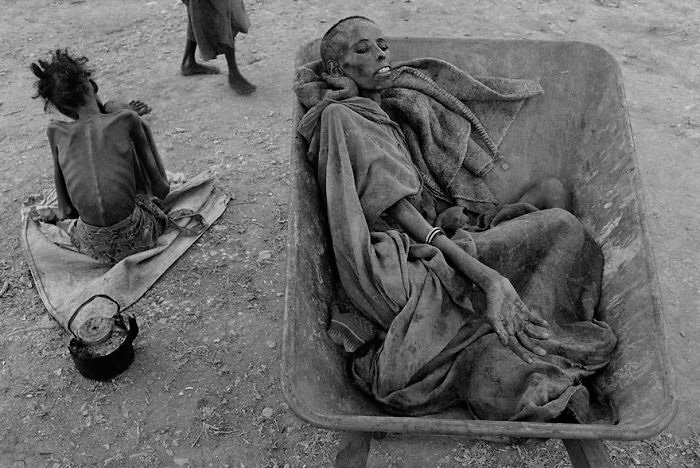
James Nachtwey is one of the world’s most famous photographers, working as a photojournalist. In 1992, he gained access to work in the famine-afflicted areas of Somalia.
When I say he gained access, I mean he did it himself. He approached news outlets with the idea of covering the famine but couldn’t get a solid assignment out of it.
James finally got support from the International Committee of the Red Cross and entered Mogadishu.
After getting publicity in the New York Times, the photographs he returned with haunted the entire world. Armed conflicts have been captured before, and their photojournalist received critical acclaim.
But Nachtwey’s was the first series of photographs to break through only by documenting a side effect of war—famine.
The image in question depicts a woman in a wheelbarrow waiting to enter a feeding center. The woman, too frail to move, reaches out her arm, asking for help.
At the time, the shared photo resulted in the largest public support operation since WWII. Nachtwey’s controversial pictures in the media helped to change foreign aid, specifically for these Somalians.
8. Dying Polar Bear — Kerstin Langenberger (2015)
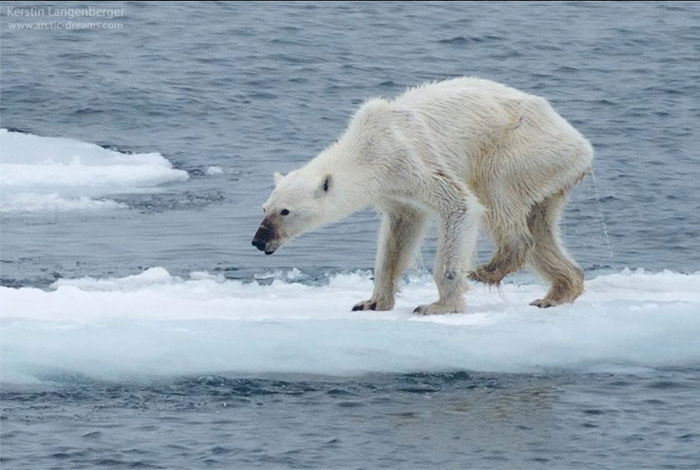
In mid-August 2015, Kerstin Langenberger captured this photograph of a meager polar bear, probably not far from dying.
At the time, she was part of an Arctic nature tour around Svalbard, Norway. She spotted the skinny bear from the boat.
At first, she did not quite figure out what she was looking at. But when it stood up, she recognized the figure of a polar bear… at least a gaunt version of it.
Langenberger suggested that the bear’s starvation was connected to climate change.
After posting the image on Facebook, the post created conversations among the followers. Some did not believe in a tangible link between the scrawny bear and climate change.
Even the Polar Bears International’s Senior Director of Conservation released a statement saying Langenberger’s claim was “a bridge too far.”
There are biases to every famous photograph. Once an image enters the public domain with text that is not conclusive, you have the power to steer viewers’ minds.
7. Comrade Stalin and Nikolai Yezhov (1917) — Unknown
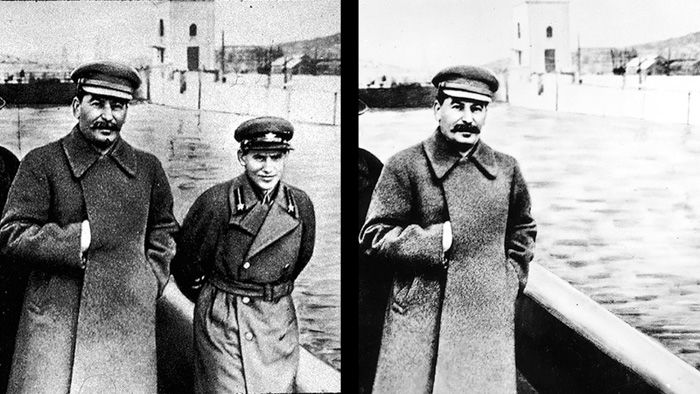
In this image, on the left, we see Stalin and the leader of the NKVD (secret police), Nikolai Yezhov. On the right and final picture, Nikolai became replaced with a body of water, and convincingly so.
This image is a great example that photo manipulation was common even back in film photography.
Between the years of 1937-8 came the Great Purge. The majority of Soviet officers found themselves in prison.
Nikolai Yezhov was responsible for the orders resulting in 1.3 million people being arrested. Half of them were executed for “crimes against the state.”
Unfortunately for Yezhov, his fate ended the same way. Denounced, imprisoned, tortured, and finally executed in 1940. The image that showed him alongside Stalin was then doctored, eliminating evidence of his existence.
These controversial pictures change the past, rendering the future up for grabs.
6. The Torture of Ali Shallal al-Qaysi (2004) — Unknown

In 2004, people’s eyes worldwide were opened by images from Abu Ghraib. This Iraqi prison was occupied by American troops following their 2003 invasion.
This shameful photo of Iraqi Ali Shallal al-Qaysi’s torture symbolized the American-led occupation. It was the first time citizens saw how the captors treated their fellow men inside these prisons.
Mr. Al Qaysi was arrested and tortured by Americans because of his opposition to the invasion by the US. Al Qaysi had been protesting through peaceful means. He owned a football pitch that US soldiers started to use to dump bodies.
He wanted to take reporters and journalists to places to show evidence of bodies injured by prohibited weapons. Al Qaysi wanted to show that these kinds of weapons are in use.
He was arrested, taken to the Abu Ghraib prison, and tortured for days. Al-Qaysi later said: “I’m spending sleepless nights thinking about the agony I went through… I even have recurring nightmares that I’m in my cell at Abu Ghraib, cell 49 as they called it, being tortured at the hands of the people of a great nation that carries the torch of freedom and human rights.”
The Iraq War brought not only controversial pictures but also stories that humanity should never forget.
5. Alan Kurdi (2015) — Nilüfer Demir
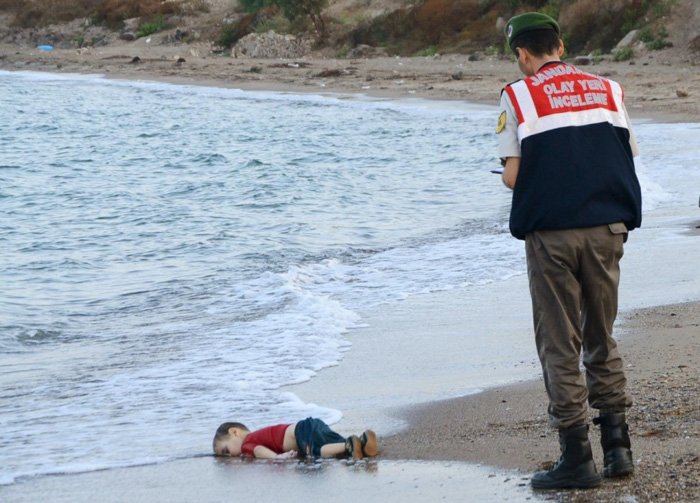
If the world thinks of a painfully sad image from the last few years, this photograph would be at the top. We wish it were a staged shot, as it would mean Alan Kurdi would still be alive today.
In 2015, Europe met with a huge refugee crisis. People from war-torn Syria, among others, fled their native countries to find refuge in European countries.
The EU could not handle such large numbers of people appearing simultaneously. So they closed most of their borders.
Those that had walked the entire way used every means they could to enter Europe. Some took perilous trips by boat from Turkey to Greece.
In one instance, the boat carrying the Kurdi family (father, mother, and two sons) from Turkey to Kos capsized shortly after setting off. The two little boys and their mother drowned.
A little while later, Alan’s (one of the sons) body appeared on the coast of Bodrum. Nilufer Demir of the Dogan News Agency raised her camera and captured the horrible scene.
Demir, the photographer, said: “There was nothing left to do for him. There was nothing left to bring him back to life. I thought this is the only way I can express the scream of his silent body.”
This photo spread around social media within hours, forcing European governments to open closed frontiers. As controversial photography goes, it is important to show how our systems often fail so we can fix them for the benefit of all.
4. Nan One Month After Being Battered (1984) — Nan Goldin
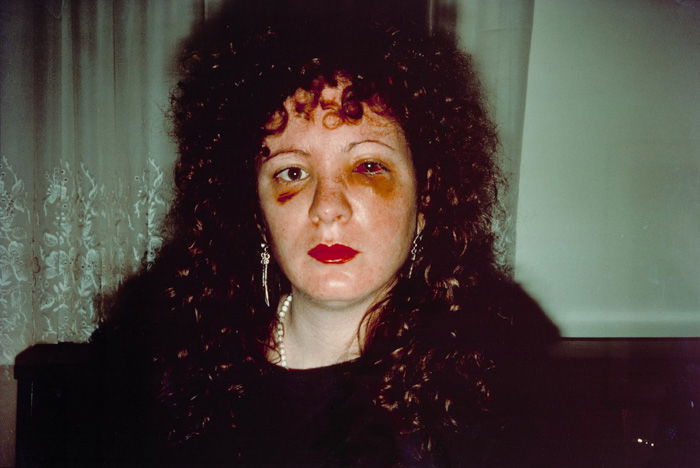
Nan Goldin is an American photographer. Her work focuses on LGBT bodies, intimacy, the HIV crisis, and the opioid epidemic. She documents real life. It is truthful and gritty to the core… often about her own connections.
Her focus falls on the real everyday struggles of those on the outer limits of society. The image titled Nan one month after being battered is no different.
The title says it all. And even though it prepares you, it is still difficult to look at. Violence against women is a very taboo topic. But it is still very real.
Here, Nan is shown beaten by a lover with who she had an intense sexual relationship. They stayed together even when every other aspect of their connection failed. He almost blinded her in his act.
She wears her bruises and bloody eye with almost pride. She withstood it, and she is still here. Her injuries look so severe that we need to look closely. We could almost mistake it for makeup.
Her hair is glossy and styled. Her lips bear red lipstick, and her clothing and jewelry suggest she is going out. The violence does not stop her from living her life.
In an image like this, we bridge the gap between photographic evidence and a beautiful portrait of an outgoing woman.
This controversial image from one of the most famous photographers brings ideas about how we view ourselves.
3. Candy Cigarette (1989) — Sally Mann
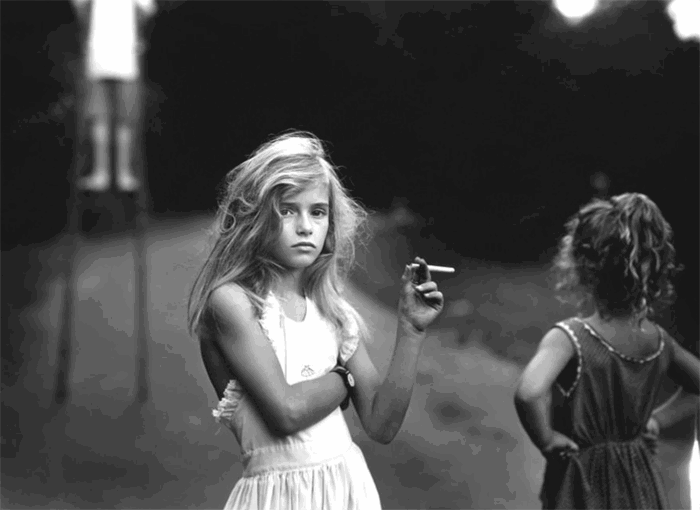
Sally Mann was named “America’s Best Photographer” in 2001 by Time Magazine. She is best known for her third image collection, Immediate Family.
These photos depicted intimate but controversial pictures of her children, 25% of which were nudes. These photos’ criticism questioned the line between pornography, fine art, and objectification.
Candy Cigarette is one of the most controversial photos in the series. It shows Jessie, Sally’s daughter, holding a cigarette and staring into the camera.
I have seen this picture many times. But I still stare at it for long minutes when it pops up somewhere. Some people get angry by looking at it, while others admire how Mann used light and composition to create this photo.
As the title suggests, it is not real but a candy cigarette. Yet, we still get anxious as we look at the photo. We see a beautiful, innocent, preteen girl in white clothes. We know she is a child, but her pose, gaze, and the ‘cigarette’ in her hand make her look like an adult woman.
This controversial photo gives us the impression that she still has a choice, whether she takes the “right” or the “wrong” path.
As viewers of the photo, we feel we could stop her from smoking her first cigarette. Maybe we could ask her to stay this sweet child for a bit longer and not rush growing up… because we all know the dark sides and many traps of adulthood.
2. The Falling Soldier (1936) — Robert Capa
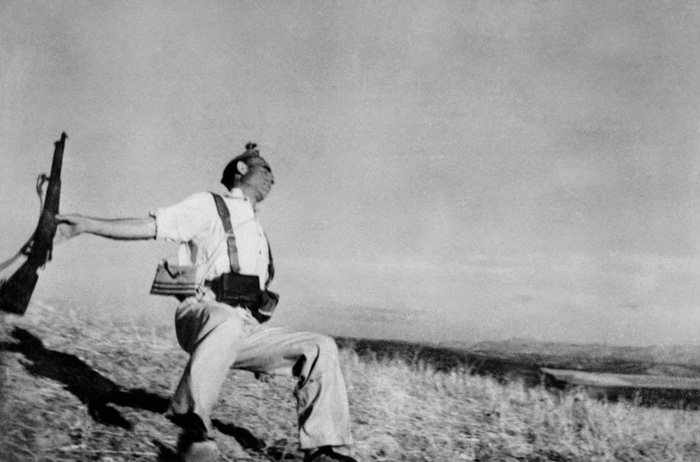
The Falling Soldier is a photograph famous for its roughness and shocking nature. It is a controversial image both in its content and its creation.
Robert Capa was no stranger to war. To this date, he is probably the best-known photojournalist that ever lived.
The Falling Soldier depicts a soldier being shot during the Spanish Civil War (1936-1939). He lets his rifle slip from his hand as he falls. He was fatally shot in the head during the Battle of Cerro Muriano on September 5, 1936.
Since the 1970s, there has been significant doubt about whether this image was staged or not. Capa was not known to stage images, as most of his work was combat or adventure-based.
But looking at the image, there are a few inconsistencies. First, many photos were staged during the Spanish Civil War. Second, the place of the photograph is debated as well.
Capa mentioned that the man was under the fire of machine guns and not a single bullet. He also described the technique he used in taking this photo.
“I was there in the trench with about twenty milicianos… I just kind of put my camera above my head, and even [sic] didn’t look and clicked the picture when they moved over the trench. And that was all. … [T]hat camera which I hold [sic] above my head just caught a man at the moment when he was shot. That was probably the best picture I ever took. I never saw the picture in the frame because the camera was far above my head.”
When you look at the photograph, it is way too good to be a random shot from above Capa’s head.
Whatever the case, this is still one of the world’s most famous and talked about photos.
1. Starving Child and Vulture (1993) — Kevin Carter
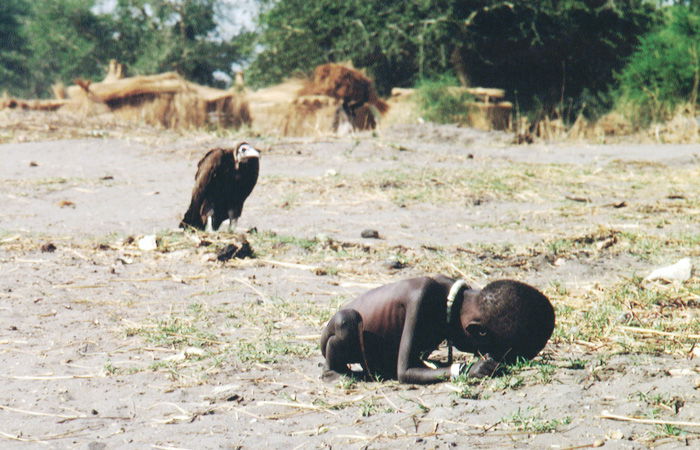
South African photographer Kevin Carter was part of the “Bang-Bang” club. This group was photographing small African townships. This took place between 1990 and 1994, during the apartheid transition.
In 1993, the group found themselves in South Sudan, covering the famine. Kevin Carter took the image of the frail child, with a vulture eying him up in the background.
This controversial image won him the Pulitzer Prize for Feature Photography. The New York Times published it in the same month, March 1993.
Newspapers all across the globe republished the image. There was an immediate response from the public about the image.
When the photograph won the Pulitzer a year after its capture, Kevin gave a speech about the picture. He became hounded by the emotional public and journalists asking why he did not help the child.
This traumatic situation added to the weight of his experiences, and Kevin Carter took his own life four months later.
An image such as this allows the general public to see situations they would otherwise be blind to. Often, a photo falls out of context, as we only see what fell in the frame.
Controversial photos like this one are important to change our worldview… even more, when famous photographers take the images.
Conclusion
There are many more controversial pictures in the history of photography. These famous photographs cover various topics, from climate change to wars. Some make us angry, and others make us feel guilty and ashamed.
What do they all have in common? They evoke emotions. They stop us from being on the hamster wheel. And they make us think about the issues that matter in life.
Do you aspire to be a professional photographer? Check out our Photography for Beginners course to start your journey!


